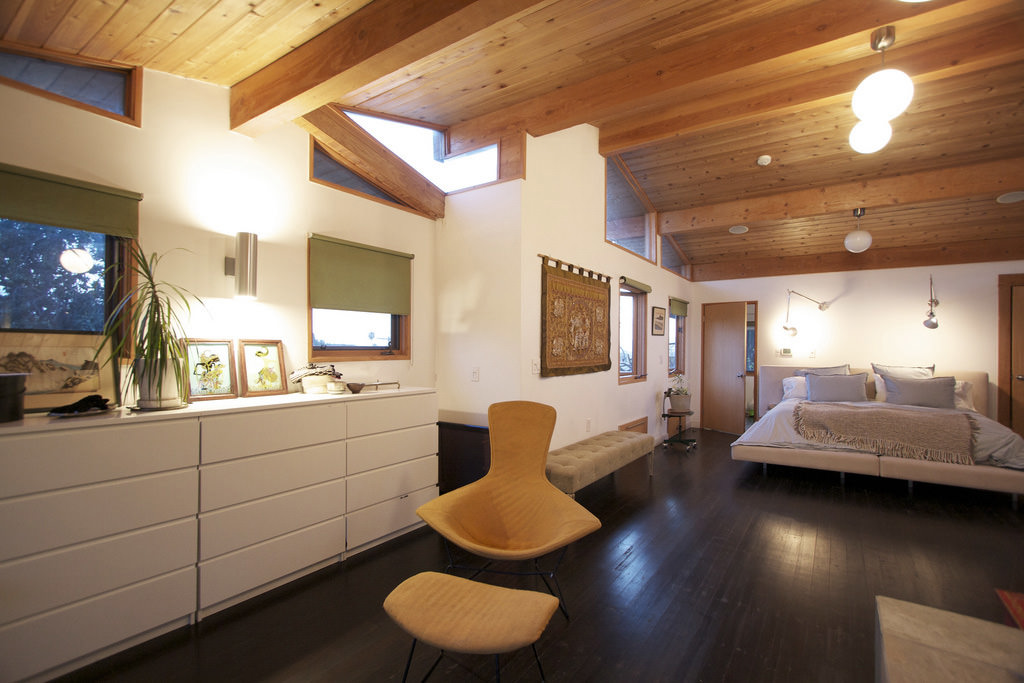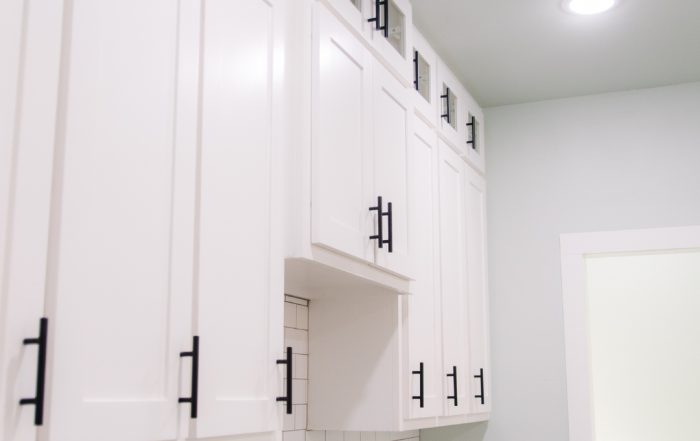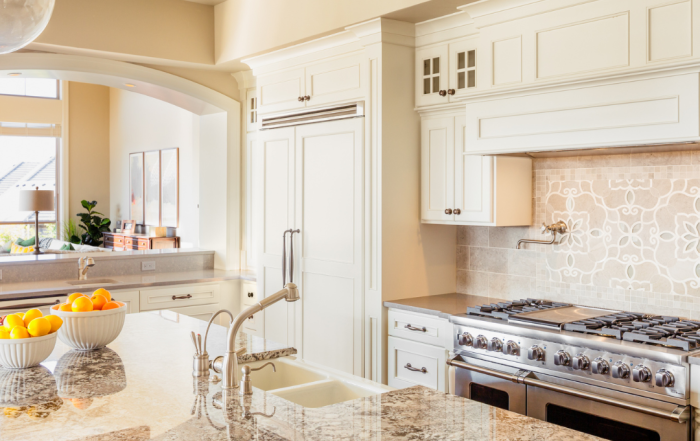
US Green Building Council’s Green Home Guide lists the most common types of green floor materials. Three familiar, natural, and renewable flooring materials are bamboo, cork, and stone. Bamboo is known to be tough and resilient, and it grows so quickly that it can harvested again in three to five years whereas the bark of a cork oak tree is ready to be harvested again in nine years. Both renewal times are shorter than the 50 years it takes for a hardwood tree to grow to maturity. A cork floor is soft underfoot, and muffles sound, but at the same time, it can last for several decades. Stone requires little finishing and is suitable for kitchens, bathrooms, fireplaces, and outdoor settings. It also absorbs and radiates heat.
TIP: Natural linoleum is a biodegradable and renewable material that is highly recommended for resilient flooring by the green building community.
Unlike the familiar linoleum of vinyl and polyvinyl chloride, it is made primarily from linseed oil, pine resin, cork dust, sawdust, limestone, and jute. According to the Marmoleum Buyer’s Guide, natural linoleum is a USDA-certified bio-based product, Allergy and Asthma Friendly-certified and has the lowest environmental footprint of any flooring. It was invented in 1860’s and has a track record of durability and performance dating back over 100 years. Natural linoleum cabin floors were recently discovered intact by divers exploring the Titanic on its 100th anniversary!
TIP: Hardwood for green floors is certified to come from sustainably-managed sources.
The National Wood Flooring Association relies on the Forest Stewardship Council (FSC) for proof that hardwoods have been harvested from forests that have been sustainably managed. FSC certification ensures the wood was not obtained by clearcutting nor harvested from ancient forests and that wood products have passed through a certified chain of environmentally friendly processing steps including processing, transformation, manufacturing, and distribution.
TIP: Look for durable carpeting made from recycled materials.
Materials for green carpeting can come from recycled PET containers, used radial tires, or nylon. The material from recycled PET containers can help durable plush carpets perform better than carpets made from virgin nylon in color retention, resistance to soiling, staining, abrasion, and static electricity. The Carpet and Rug Institutes (CRI) Indoor Air Quality Green Label Plus certifies environmentally friendly carpeting products that emit fewer volatile organics compounds (VOCs) as well as the adhesives used for installation that do not give off VOCs.
TIP: A cement slab floor can be energy efficient and green.
A smoothly finished cement slab floor can also function as part of a passive solar system, absorbing heat during the day and radiating it at night when temperatures drop. Organizations such as BuildingGreen, Inc. publisher of GreenSpec Directory, qualify and list green flooring materials such as natural linoleum, cork, and concrete.
TIP: Consider the ecological footprint of green flooring during it purchase, installation, maintenance, and disposal.
Flooring materials including adhesives, stains and sealers, once installed, can emit gaseous compounds over long periods of time. Indoor air quality is a major consideration for the green building community, and a FloorScore certification attests that the flooring meets stringent requirements for indoor emissions. Look for adhesives and sealers that do not emit VOCs or contain formaldehyde, and that meet Greenguard or GreenSeal emission standards. Green cleaning products and polishes should be used for maintenance during the lifetime of the flooring. At the end of the useful life, some wood floors can be reclaimed for reuse or are biodegradable, and natural linoleum is biodegradable as well. Stone, concrete, ceramic and glass tile can be broken up and reused for composite material.
Jessica Kane is a professional writer who has an interest in interior design and home decor. She currently writes for www.custom-mats.com, a leading vendor of plain and custom mats.




